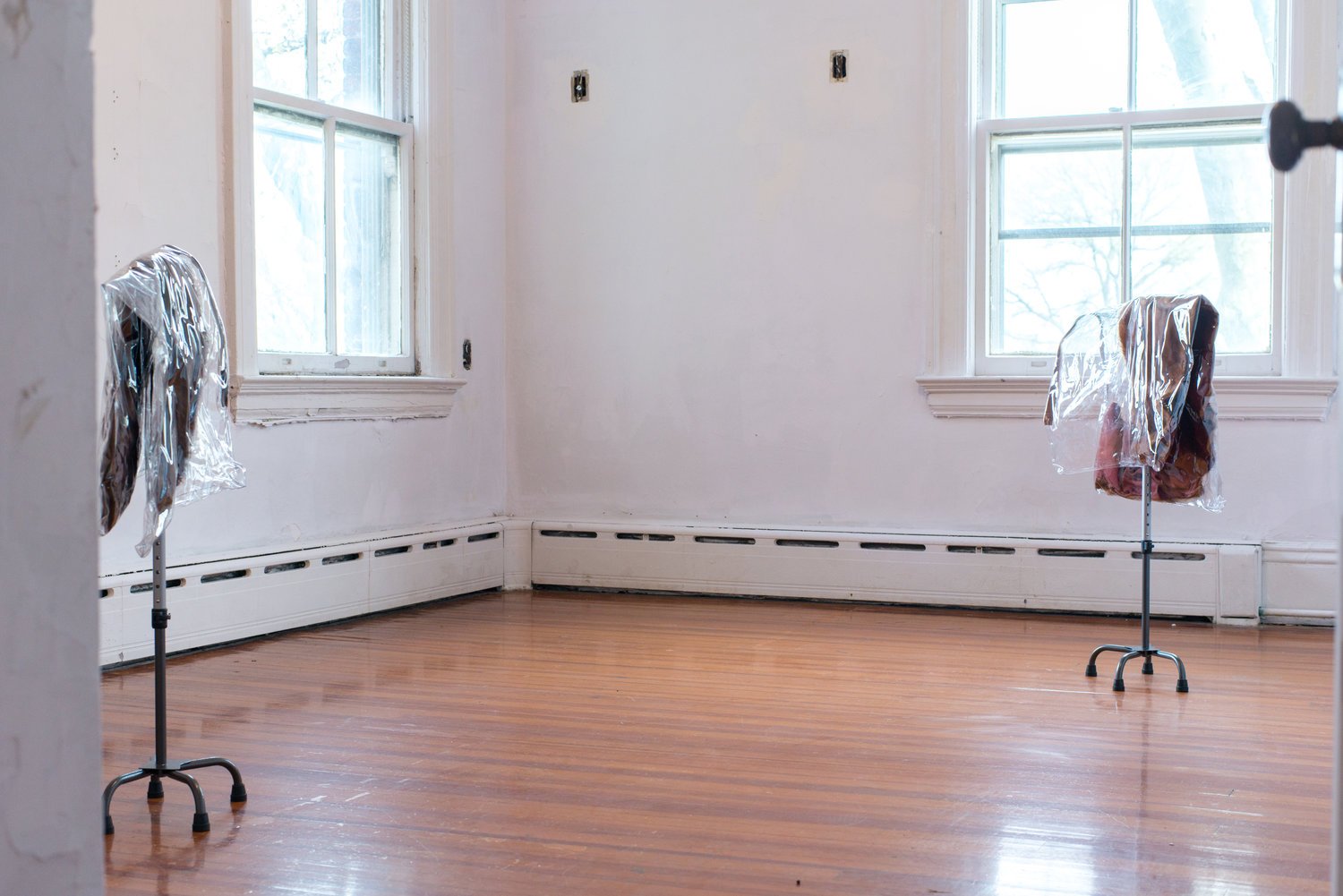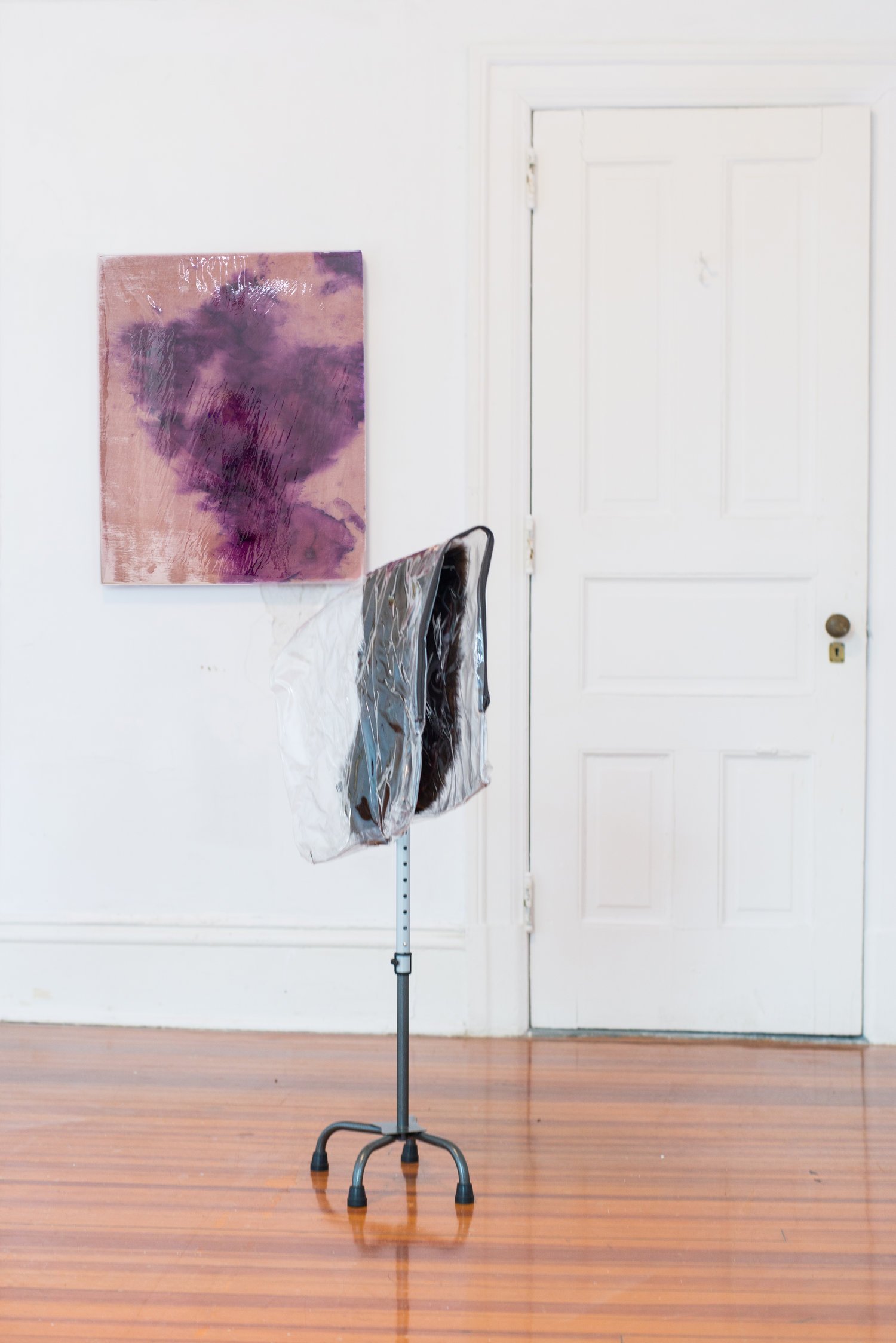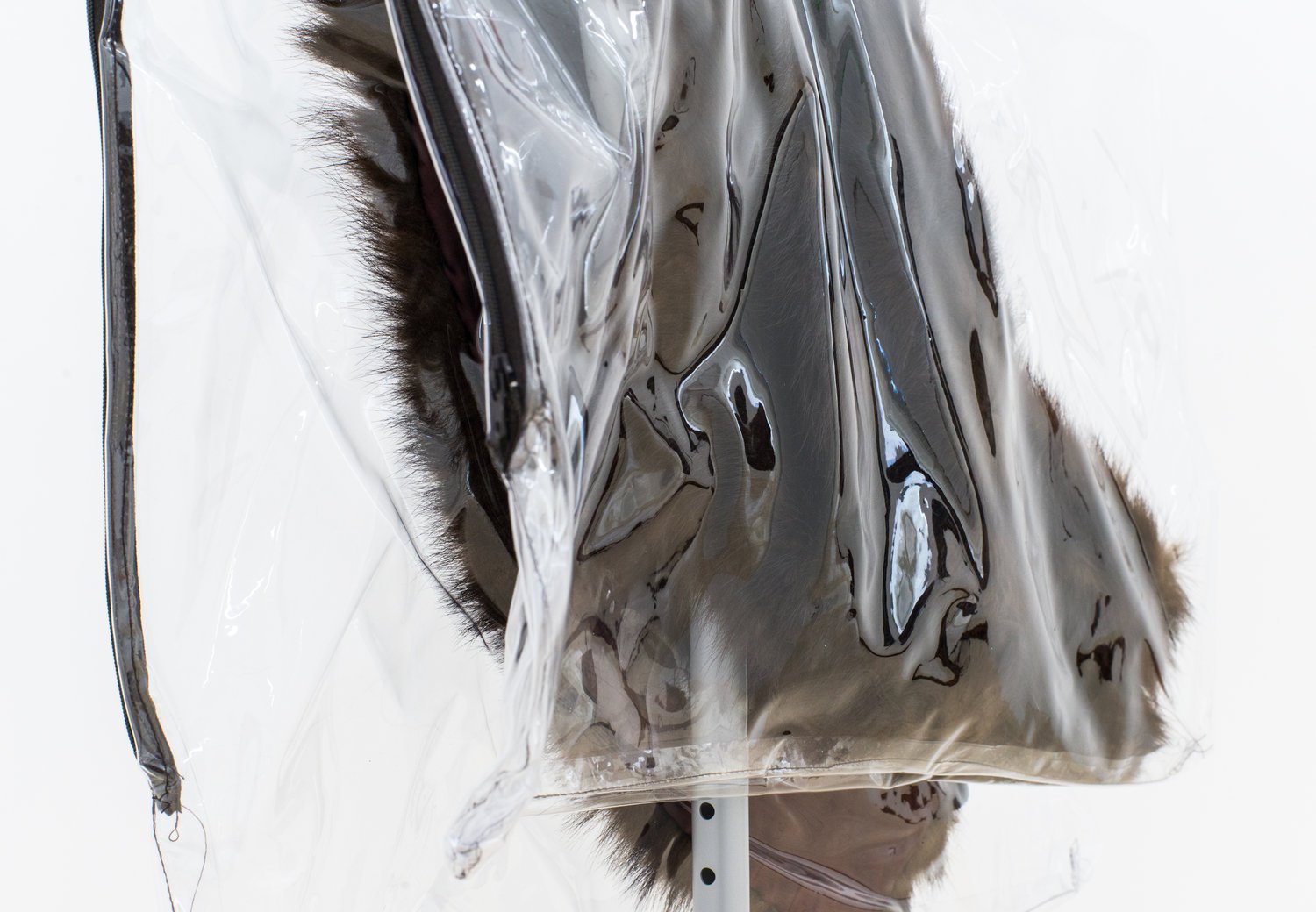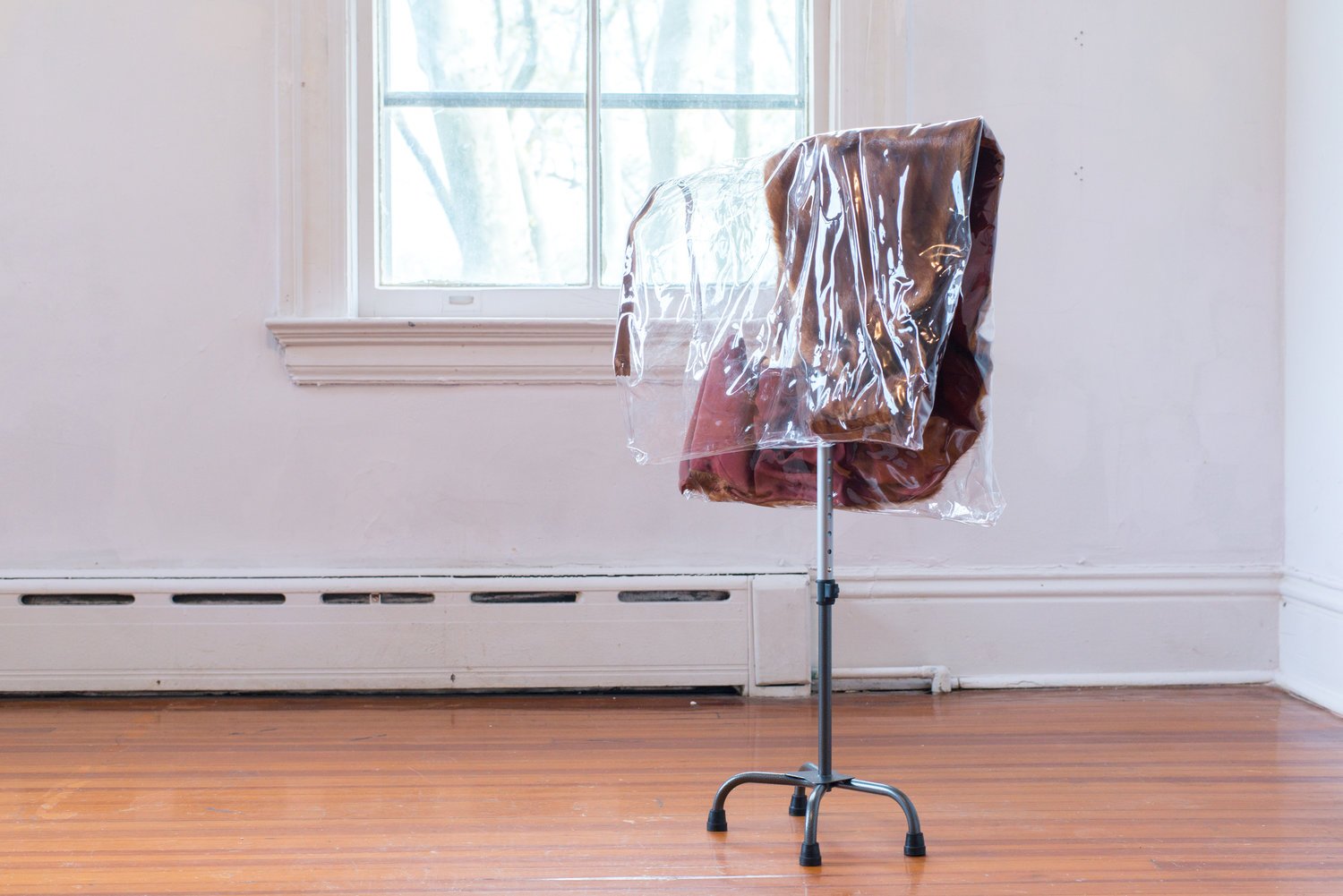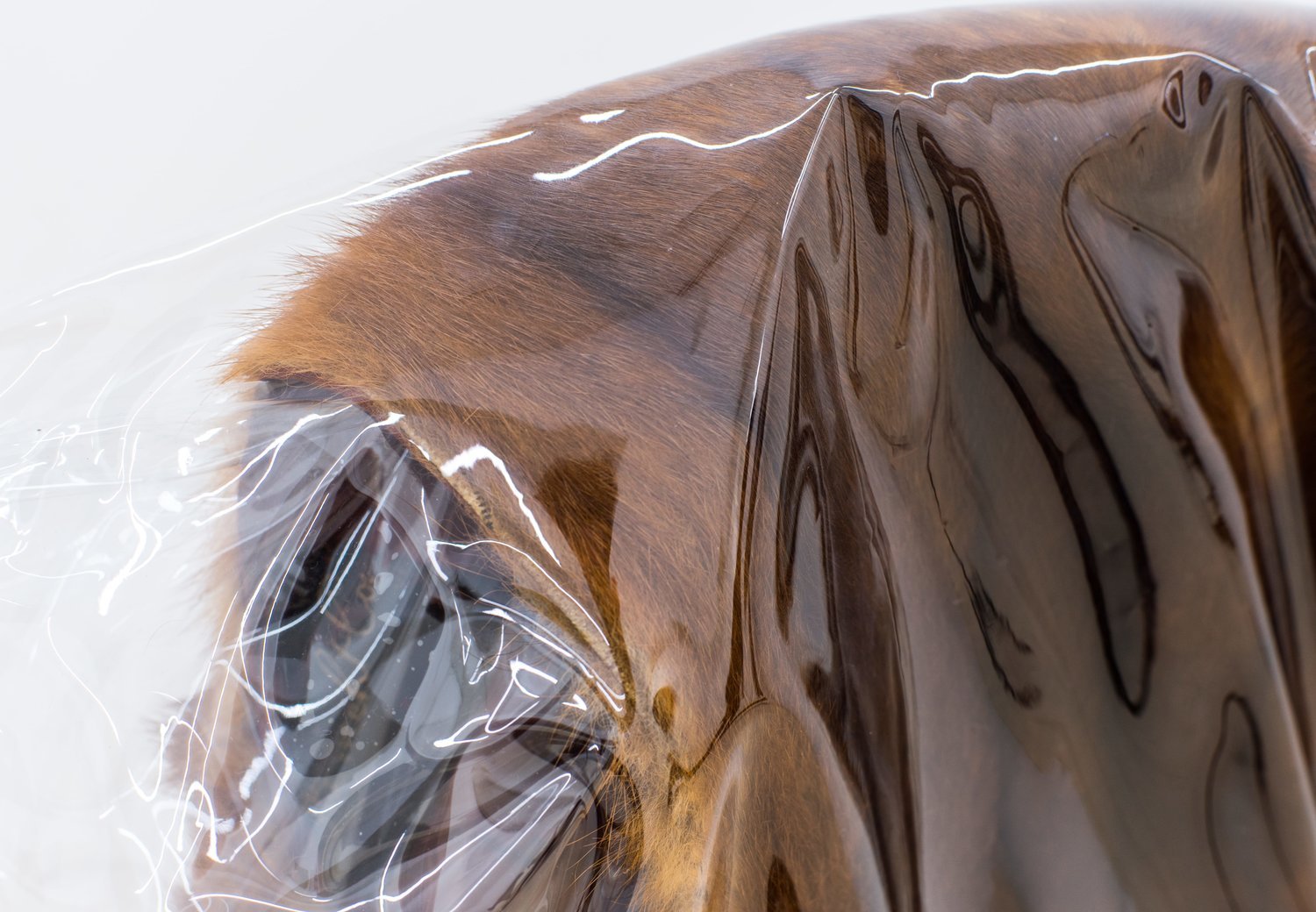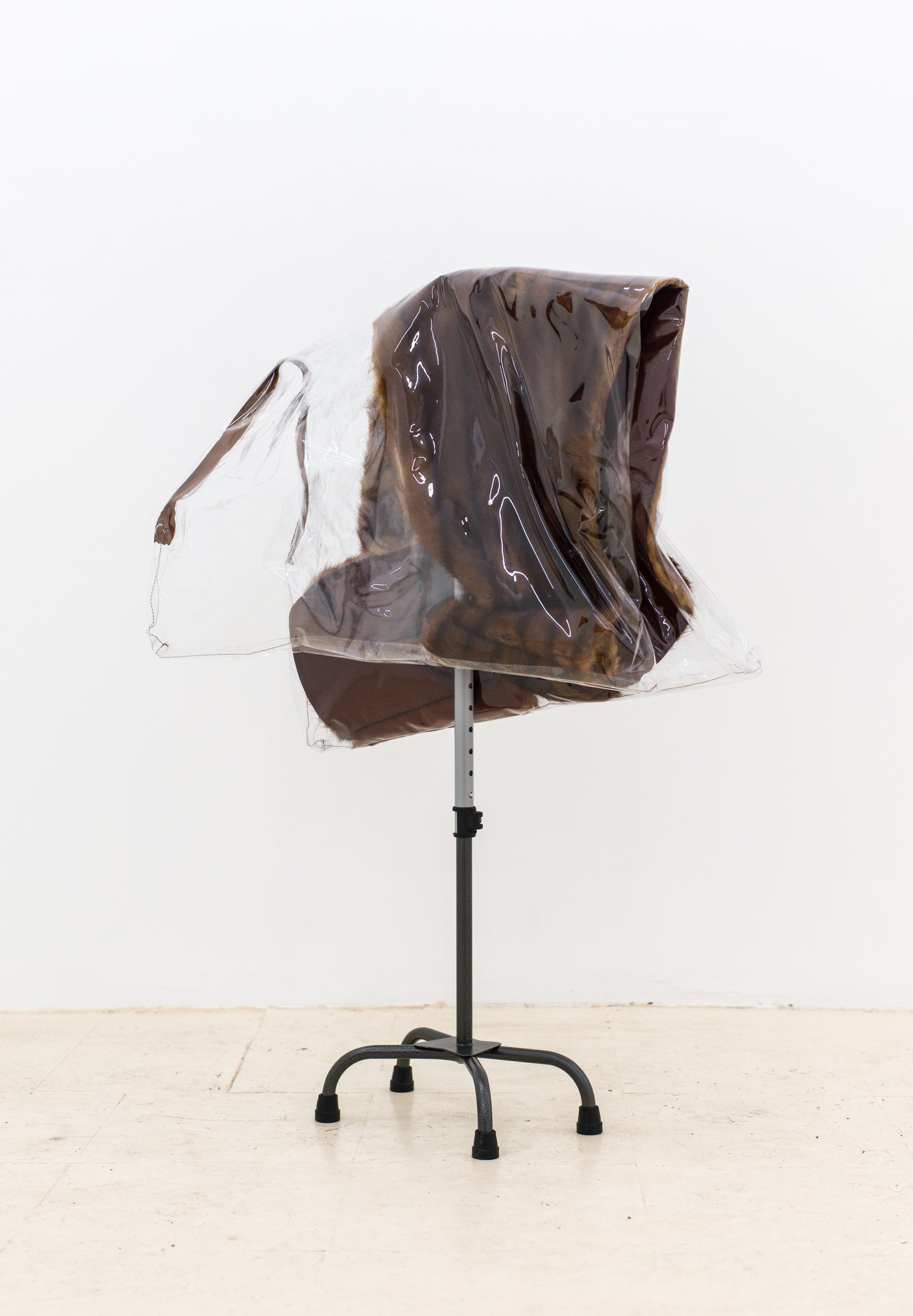NADA House
Quay Quinn Wolf
May 2 - August 4, 2019
Quay Quinn Wolf's presentation at NADA House on Governors Island features two new sculptural works and one wall based work. The three works explore his relationship to his grandmother, and reflect on her relationship to 1950's cinema. The installation stems from an early childhood memory of watching Douglas Sirk’s Imitation of Life (1959) with her for the first time.
Sirk’s film is a tale of two single mothers, one white, and the other black. Lora Meredith (Lana Turner) plays a white single mother who dreams of being on Broadway. Lora has a chance encounter with Annie Johnson (Juanita Moore), a black widow who later becomes the caretaker of Lora's daughter, Suzie (Sandra Dee). While the white protagonist Lora pursues her stage career, Annie's light-skinned daughter, Sarah Jane (Susan Kohner), struggles with her black identity. While watching the film, Wolf’s grandmother would comment and imagine the black domestic characters adorn in the opulent fabrics the white female characters wore.
Wolf’s Dreaming of Luxury no.1 and no.2 are freestanding sculptures. They’re comprised of fur stole—one mink, and one rabbit—in custom stitched PVC bags. The soft transparent plastic encases the sumptuous fur, which drapes over four legged steel canes. The PVC seals and encloses the furs, acting as a barrier to the outside world, preserving for posterity. The two canes are armatures that support the projected desires of his grandmother, while also referencing her aging body and reliance on their structure for mobility. The works consider Wolf's grandmother’s aspiration to own and wear the luxury furs she saw white Hollywood movie stars wear, signaling the associated wealth and status.
The presentation also features a wall based work titled, Juanita Moore would have looked better in that pink velvet dress with the fur collar Lana wore (2019), made from pink silk-velvet stained with African red roses and shea oil. Like the sculptures, the wall-based work is upholstered in soft PVC. The bruise-like surface staining seems to signal a damaging, despite the rich materials, and the title refers to a specific comment his grandmother made. Juxtaposed with the solitary sculptures in the nearly empty room, the works comment on the pigeonholing of black actors in 20th century American cinema. Though attempting to move beyond the domestic sphere, they’re confined to the house and yearn for a different lifestyle.
The three works chart the imitation of an aspired lifestyle, one that ultimately has not proved attainable.
Quay Quinn Wolf Dreaming of Luxury (No.1), 2019 Vintage mink fur stole in custom soft-PVC bag, four-prong cane 40 x 27 x 7 inches
Quay Quinn Wolf Dreaming of Luxury (No. 2), 2019 Rabbit fur stole, custom PVC bag, four-prong cane 40 x 25 x 7 inches
Quay Quinn Wolf Juanita Moore would have looked better in that pink velvet dress with the fur collar Lana wore, 2019 Pink silk-velvet stained with African red roses and shea oil, upholstered in soft pvc 30 x 24 x 2 inches

